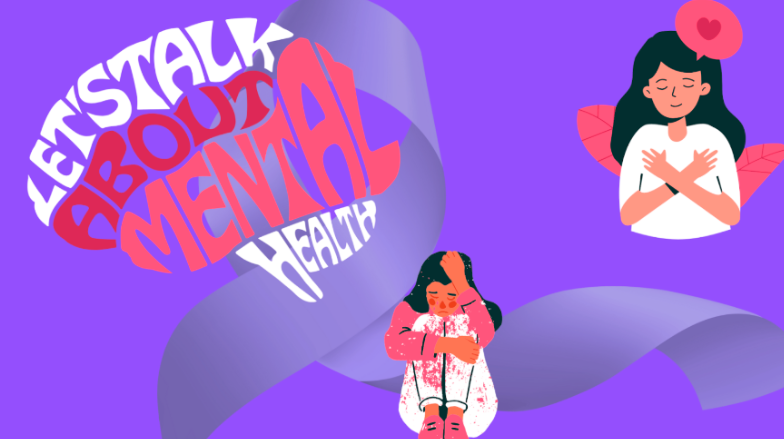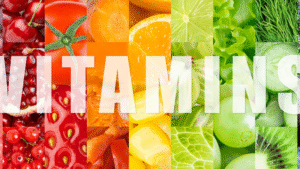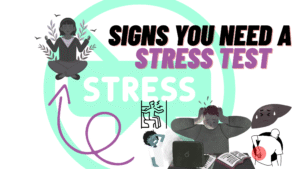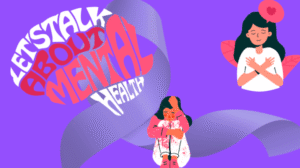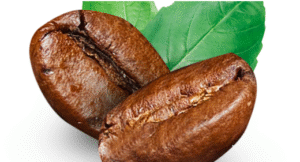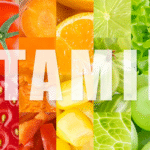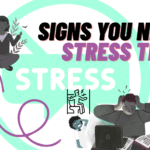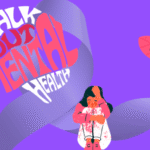Introduction
The green ribbon and the semicolon tattoo are two such mental health symbols that convey hope, resilience, and support. They’re not beautiful artwork; they make you remember that mental health is important, and you don’t have to wrestle with your issues by yourself.
But whereas symbols may make us happier and give us hope, the things we go around every day can also have a considerable impact on our mental well-being. A lot of people feel quite different once the seasons change. Their mood, energy, and mental focus all change. A sunny spring morning may make you want to get things sorted, but a cold winter afternoon may weigh you down. It is equally important to understand what such symbols represent a s it is to respond to the question, “How does changing seasons impact human mental health?” Throughout this article, we will discuss the most prevalent mental health symbols and what they symbolize. We will also discuss the ways that the seasons may impact your psychological health and provide you with helpful advice on how to maintain your mind health in top condition year-round.
What Are Mental Health Symbols?
What it represents
Mental health symbols are graphics, designs, or shapes that express support, awareness, and strength for individuals who are experiencing psychological wellbeing issues. Similar to the red ribbon for HIV/AIDS or the puzzle piece for autism, they express an easily remembered statement.
There are four simple methods of using these symbols:
- Speak more about mental state concerns.
- To shatter the taboo, discuss things openly.
- Give people in trouble hope.
- Tell individuals to be kind to one another at home, in the workplace, and in their neighborhoods.
Why They Matter
Even though symbols can appear tiny, they can make a significant difference in the way you feel.
Emotional anchor: A semicolon tattoo or green ribbon pin could remind you to continue going even when it gets tough.
Conversation starter: Having a mental health symbol on you or wearing one could make other people feel more at ease discussing their own issues.
Community connection: Seeing another person who shares the same emblem usually forms an intense but silent connection and acknowledgment that mental health is important.
Popular Mental Health Symbols & Their Meanings
- Semicolon (;)
What it signifies: “Your story isn’t finished yet.”
A semicolon is employed when an author might have concluded a sentence but decided to keep going.
It signifies hope and resilience, particularly for individuals who have considered dying themselves, were depressed, or were worried.
Common use: Individuals have used them for tattoos, bracelets, organization logos, and word-of-mouth.
- Green ribbon
It’s a universal symbol for mental health awareness.
To get people talking about wellbeing and raise awareness through mental health walks, fundraising, and online campaigns.
- Lotus flower
The lotus flower represents growth, rebirth, and triumph over adversity.
The lotus flower blooms beautifully even in dirty water, so it is an excellent symbol of strength and healing.
This is a common occurrence in mindfulness, meditation, and recovery programs.
4. Butterfly
The symbolism of a butterfly is transformation, rebirth, and the process of development from weakness to strength.
A symbol of recovery that is applied in numerous rehabilitation treatments and emotional balance art therapy.
5. Infinity Heart
This symbol represents love, niceness, and a commitment to always be concerned about mental health.
A symbol of support for oneself and loved ones who are struggling with their emotional balance.
How Does Changing Seasons Impact Human Mental Health?
Mind health doesn’t exist in a vacuum. Some environmental aspects that can greatly influence mood, concentration, and energy are light exposure, heat, and the seasons. In order for people to be more resilient, they must know how changing seasons impact human psychological wellbeing.
SAD, or Seasonal Affective Disorder
A type of depression that occurs frequently during late fall and winter when days are shorter.
Symptoms: Some of the signs are being tired, depressed all the time, not feeling like doing anything, eating changes, and sleeping a lot.
Causes: The circadian rhythm becomes disrupted when the days shorten and there is less sunlight. When you get less sun, serotonin (a mood-controlling neurotransmitter) decreases, and melatonin (a sleep hormone) increases. This causes you to be tired and sad.
Season-by-Season Cognitive Health Effect
Spring and summer:
Pros: Longer days expose you to more vitamin D and serotonin, which can brighten your mood and make you more energetic.
Cons: Excessive heat and long days increase your nervousness, irritability, and inability to sleep.
Some individuals even experience “summer SAD.”
Fall and winter:
Pros: The colder temperatures make people want to stay home and spend time with lots of friends.
Cons: If you live in the north, less sunlight may make you drowsy, muzzy-headed, lonely, and depressed.
Extreme temperatures and mental stress:
Heat waves: When it’s extremely hot, you may become irritable, anxious, sleep poorly, and have trouble concentrating.
Extremely cold: Individuals feel more isolated when it’s extremely cold, particularly elderly individuals or those who live by themselves.
Biological Connection
Light exposure immediately impacts the internal clock of the body, influencing sleep, hormone balances, and mood. Disturbance in this cycle, either from insufficient light during winter or excessive artificial light in the evening, leads to emotional dysregulation and mental tension.
Combining Mental Health Symbols with Seasonal Awareness
These symbols are important in and of themselves, but they can also be very helpful when paired with seasonal practices of self-care. You can utilize them as anchors to stabilize your emotions on a daily basis and give you practical reasons for shifting throughout the course of a year.
Symbols and Seasons:
How to Use Them
- Wear a green semicolon or ribbon bracelet during the winter to remind you that the hard times will get better.
- Use light therapy in combination with it to compensate for the absence of sunlight.
- In spring, incorporate pictures of lotus flowers into journals or calendars to demonstrate that you are healing, growing, and beginning again.
- During the summer, place butterfly artwork or decor in your home or business to encourage transformation and positive energy.
- During fall, have an infinity heart charm as a reminder of love and connection when you’re lonely.
Community Awareness Campaign Ideas
- “Symbols of Hope” is a great campaign title to make people aware in the community.
- Winter Drive: Distribute green ribbons from December through February to make people discuss how blue they get during winter.
- Art Therapy Workshops: Have them paint, create jewelry, or craft using their desired mind health symbol as a design.
- Seasonal Journaling Programs: Encourage individuals to monitor their moods throughout the year through the use of symbolic imagery and thought-provoking writing.
Practical Tips for Supporting Mental Health Through Seasonal Changes
Symbols are strong, but they work much better when you use them with good methods.
You can do these things all the time to maintain your mind’s health:
Maximize Daylight Exposure
- Walking an hour after waking will enable you to sleep more and enhance your serotonin levels.
- Open blinds to allow sunlight in during the day.
- Place work areas nearer windows.
Light therapy
A 10,000-lux light treatment box can simulate sunlight and help with symptoms of winter depression.
Maintain a consistent sleep routine
- Go to bed and get up at the same time each day, including weekends.
- Before sleeping, don’t glance at your phone or any other artificial light.
Stay Physically Active
- Exercise releases endorphins, which make you feel better and lessen your stress.
- Change your workouts with the seasons. In the summer, ride your bike or hike. Do yoga or weight training indoors during the winter.
Adjust Diet Seasonally
- Adapt what you consume seasonally. Consume foods rich in vitamin D, including salmon, eggs, and fortified cereals, during the winter months.
- During the summer, consume plenty of water, light, and refreshing meals such as watermelon and cucumbers.
- Reduce caffeine and processed sugars throughout the year since they may cause you to be nervous or fatigued.
Stay in contact
- Speak to people regularly, either face-to-face or via the internet.
- You can remain in contact by volunteering, participating in local clubs, or attending annual events.
Why This Matters
You can create a powerful toolkit for resilience by bringing the power of mind health symbols together with a sense of knowing the seasons.
Having knowledge about the seasons can help you and prepare you to handle fluctuations in mood and energy. Symbols can remind you of strength, hope, and connection.
They strengthen you on the inside by giving you symbolic meaning and are more pliable on the outside by assisting you in making choices that are appropriate for the seasons.
Final Discussion
The green ribbon and the semicolon are two mental health symbols, reminding us that there is always hope to get well. They are not jewelry or art; they are signs of strength.
The natural cycles also have a deep impact on our mental well-being. Understanding the effects of the seasons on people’s emotional well-being can prepare us for what lies ahead. We can prepare ourselves for the lethargy of winter or the excessive stimulation of summer, for example.
By employing symbolic reminders as well as seasonal self-care tips, you can better manage your inner well-being.
Your cognitive health will shift and transform, just as the seasons do. There will be some heavy days, and others that are light and bright. Hope is one of the most enduring symbols: you can carry it with you through each season of life.
Yes. Mental health symbols can act as reminders of resilience and hope. Pairing them with seasonal coping strategies, like light therapy or journaling, creates a stronger support system.
Not always. While the green ribbon is widely recognized, different cultures may use unique colors, flowers, or designs to represent mental health. Symbols often adapt to local traditions while carrying the same universal message of awareness and resilience.
Yes. Seasonal changes can influence anxiety levels too. Longer summer days and extreme heat may trigger agitation or restlessness, while shorter winter days can increase worry, tension, and social withdrawal.
Yes. Younger people often resonate with creative symbols like butterflies or infinity hearts, while adults may prefer subtle reminders like ribbons or jewelry. Symbols adapted for youth can help schools and parents start conversations about emotional health early.
Workplaces can integrate mental health symbols into awareness campaigns, wellness days, or office décor to remind employees that mental health matters. This not only reduces stigma but also encourages open conversations about stress and wellbeing.

